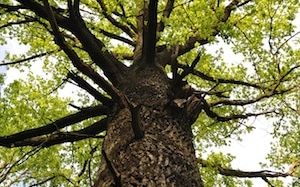More baby boomers reach retirement age every day, even though the road to retirement is a long one full of financial ups and downs, with equity release and wills causing lots of real stress. However, fewer retirees are choosing to live in retirement communities. Instead, they’re “aging in place” and would rather renovate their current homes in order to transition into their golden years in comfort and safety. As they get older, their health deteriorates so they have to spend more time at places like Advanced Urology to keep their health on track. This means that more and more are deciding not to move to a new retirement house because it just adds on top of the stress that they already feel. Instead, they look to improve their current home to their advantage.
What does this mean in terms of upgrades and improvements to older homes? Here are just a few of the most prevalent trends in terms of renovations being made for seniors to their baby boomer generation homes.
Aging in Place – Features to Consider:
- Light switches and thermostats should be moved to accessible heights — no more than 48 inches from the floor — to accommodate the possibility of, or current usage of, a wheelchair. In fact, automating light switches with motion sensors and timers are also a fantastic option to allow seniors to control the lighting of one side of the house while occupying another.
- Programmable thermostats with easy-to-read displays are a big plus for aging homeowners. HVAC experts state programmable thermostats are efficient and also save on average of $180 per year in energy bills.
- Sinks should have open space underneath for wheelchair use, but with a panel in place to guard against contact with hot pipes.
- More efficient and motorized shades and blinds are ideal as well. This allows them to control temperatures and natural lighting within the home at the click of a button instead of pulling strings or lifting to twist the shades open or closed. Automation, even with window covers, will make daily living adjustments easier.
- Other updates which will increase a home’s energy efficiency include detecting and sealing air leaks, replacing weather stripping and caulking on windows and increasing the amount of insulation.
- New toilets which are 17-19 inches high (around 2 1/2 inches higher than the standard) are helpful to older residents. There are also adjustable-height toilet systems available.
- Snow-melting systems involving radiant heat are being installed on roofs in order to avoid the need to clear ice from gutters, as well as to avoid ice dams which can cause leaks.
- Another upgrade which proves invaluable in winter is the installation of radiant heating systems underneath driveways and sidewalks. These systems remove the need to shovel snow and prevent slips and falls on ice – both of which are undesirable situations for older homeowners.
Still, even though fewer baby boomers are moving away, not all of them are staying put in their current homes. According to a 2014 Better Homes and Gardens Real Estate survey, 57 percent of baby boomers plan to sell their current homes and move into homes which are better suited for their purposes and potential challenges, rather than staying and renovating. If this trend comes to fruition, there will be a great sell-off of baby boomer homes to members of the millennial generation.
With this in mind, it’s key for a home to stand out from the crowd, and one way to guarantee this is to make a home more energy efficient. This could mean the installation of new, more efficient HVAC systems, programmable thermostats, increased insulation, tankless water heaters—anything to make the home more modern, energy efficient and cost effective for the new owners, who have come to expect such features as commonplace and even necessary. One way to start making your home energy efficient is by checking how much you are paying and consuming gas and electricity. If you find it is higher than you expected, you may want to look into a site like Simply Switch, who can help you switch providers to find the cheapest energy plans and deals around. This would be a good step in the right direction for energy efficiency.
No matter what the motivating factor, be it “aging in place” securely or increasing the chances of selling a home in the middle of a saturated market, the fact is that baby boomer generation homes generally mean older appliances, inefficient energy systems and the need for upgrades which will not only increase comfort and safety but also help save energy and money in the long run.



